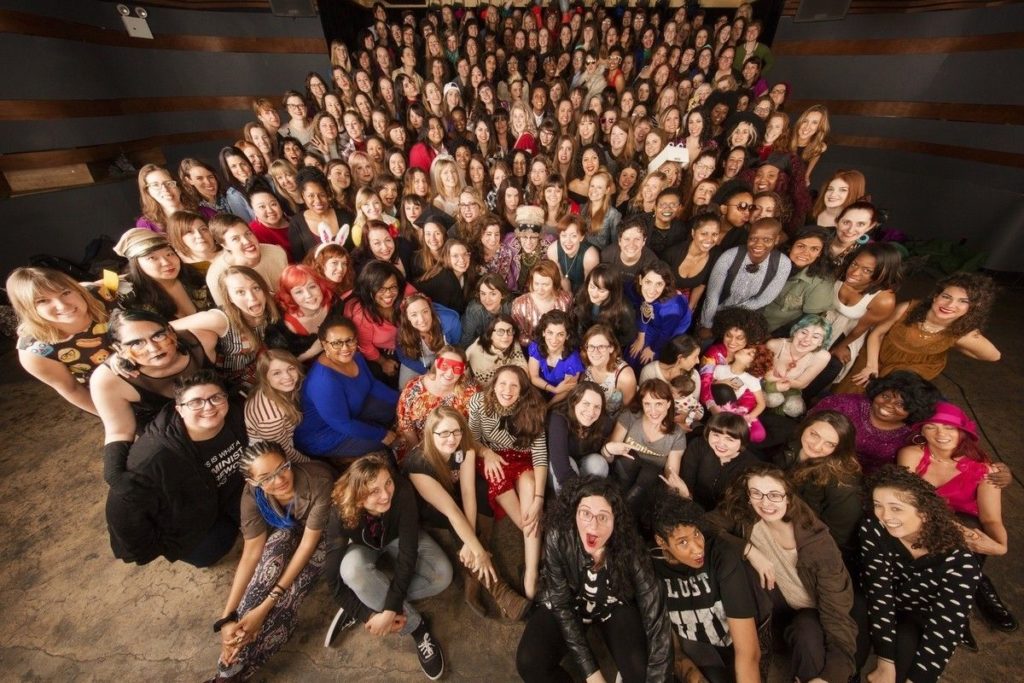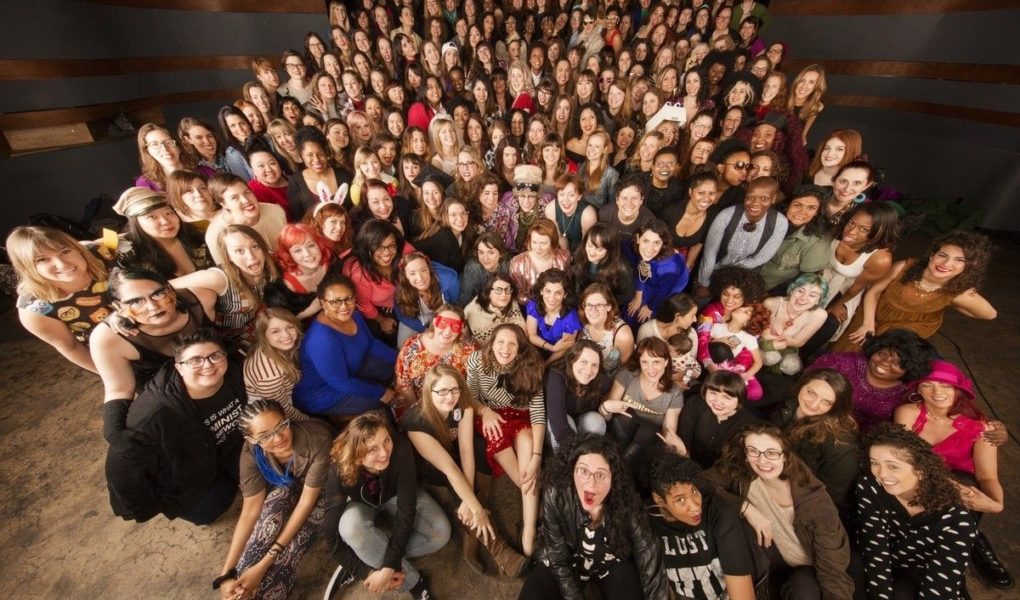Music, jazz, and the female view
We seem to have been trying to address the shortage of female musicians for decades, and nowhere is this more apparent than in jazz. Progress is incremental. So perhaps we need to look a little deeper and consider some of the reasons behind this.
The once-accepted explanations – “jazz was always male-dominated, women were often seen as ornamentation, women supported men, made their lunch, sewed their jackets and could not be seen in seedy clubs” – no longer work. Women of today are more than capable of challenging misogyny and calling out behaviour that does not respect everyone as equal.
We have many great organisations working to support women and create workshops, spaces, platforms, and forums where their views are heard – including Women In Jazz UK, International Women in Jazz, Women in Jazz South Florida, Women in Jazz, Ireland, and many other groups. We have prestigious colleges like Berklee with programs designed to encourage female musicians and many initiatives in gender studies and even summer school programs designed to help women fight cases where they feel sidelined or feel discrimination has occurred. There are supportive social media groups like the Women In Jazz Facebook group and there are writers who advocate for women in books, articles and other areas. We have the F-list, a fantastic resource listing female musicians, their genre, availability, and contact details. There is no excuse for not finding female musicians to play any genre. Some reasons behind the absence of women include::
- Women are not given a chance to choose instruments suited to jazz at school level
- Women take career breaks to marry or/and become mothers
- Women have more safety issues when travelling to and from gigs
- Women do not feel comfortable leading or soloing
There are lots of reasons given as to why there are still far fewer females than men in music and particularly in jazz. I recently counted up female performers at music festivals ( I need to get out more), and in most cases, men outnumbered women three to one. Something else is going on, and I believe change needs to happen on institutional, internal, and broader levels.
Institutional attitudes are changing, and in many ways, these are easier to tackle because they are tangible. We can enable change by upholding laws and the rights of individuals. We have seen progress in the number of colleges offering jazz as part of music study – or degrees entirely based on jazz. The law protects from discrimination where proven, and there are laws protecting women’s rights in the workplace and terms of employment, pay, and maternity leave. So, there is a lot to support women legally, practically, and encouragement through supportive groups, lists of female musicians, etc. Many past excuses for not using female musicians, such as them not being available, not coming forward for auditions, festivals, or performance opportunities, are now defunct. In theory, women can do anything men can, and gender identification means little compared to what you bring to the table as a musician.
The second area is internal, which is more complicated. Women need to view themselves a little differently. They need to see themselves as leaders: to believe they are as good as male musicians and expect to be on stage, in that spot they want, and to know their talent got them there – not tokenism, fulfilling quotas, or anything else. If they had done a blind audition, they would expect to end up in the same place, whether as part of a band or leader.
But women do not seem to have this belief. They still pander to the male gaze by posing provocatively, dressed in skimpy outfits and in settings they would never be in while playing or singing – laying over a piano, astride a bench with their stocking tops showing, or wearing revealing outfits. There is, on the one hand, nothing wrong with this. Some look great, and if you got it, flaunt it, but on the other hand, it shows women still feel pressured to pander to the male gaze. There is a story – with different variations which goes something like this. A famous male pianist turned up at a gig in a well-worn jacket, sweating, shiny-faced, and played the piano beautifully. His music was praised. The next night a female musician arrived in a beautiful dress, made up to perfection, with a small ladder in her stockings and played the same piece beautifully. People talked about her turning up with a ladder in her stockings. Women need to get over the fear of being judged on their appearance and sex appeal rather than their playing and believe their talent is just as valuable as their looks. And audiences need to take the same attitude to women as they do to men – most do, it is just some (sigh) who never seem to change.
Men also need to do their part. It is easy for an editor or publisher to say, ” OK, we hear what people need. We will endeavor to include more women on our pages.” They need to consider what that means. How can they best use women writers? How can their different take on things be used, and how will they sit alongside journalists already writing for that publication? It is not enough to include more women; they need a validated place and reason for inclusion.
Editors, where will you use female writers? Where is the best place for them in your columns? Can you make space – a particular space – for them? Venue managers, is the green room suitable for men and women? And the toilets? Would you consider afternoon performances to allow for child care and female safety to be taken into account?
Afternoon gigs work. Last year, I went to an afternoon gig with male and female performers. It was packed. So was the next afternoon performance. The audience was a little different from the night crowd – families, teenagers, and many women – far more than at most gigs.
There has been progress not just in jazz music but across the music industry in general, with more label bosses, radio hosts, writers, editors, and musicians being female. However, there is still a heavily weighted male bias across music and jazz in particular. The changes needed are relatively simple – self-belief by women and more profound thoughts from people who show a willingness to improve the situation.
The signs of progress are tangible – female performers won the majority of the Brit. Awards this year. Many performers like Adele, Lady Ga-Ga, and others are established as forces in the industry. In classical music, the extension of blind auditions – where a musician auditions behind a screen – has seen more women in major orchestras. In jazz, we have many women making clear inroads – including Emma Jean Thackery, Nubia Garcia, Laura Jurd, Melissa Aldana, Jane Ira Bloom, Jane Bunnett, Terri Lynn Carrington, and many more providing exemplar images of women who have succeeded in jazz music by their talent and knowledge of the industry.
Yet some behaviour is entrenched and will take many years yet to change. Still, you hear of misogynistic behaviour. A male tutor singled out the only female student for criticism time and time again over many months. The male agent who introduced himself by sticking his card into the cleavage of a female sax player. The ignoring of females at jam sessions. The male festival manager who asked a trumpet player who answered a call-out for instrumentalists if she knew a male musician who could play as he had fulfilled his quota of female musicians. Or the venue manager who refused to speak to the female member of a duo about future bookings, asking when the man was available. Some things take time to change.
At the same time, balance is difficult. Women should not expect, or get, roles because of their gender, and pressurising columns and magazines to take more work from female writers if the work is not of a suitable journalistic standard, for example, is not good for the industry. At the same time, neither should they be denied the opportunity due to entrenched attitudes and a lack of practical thought. Sometimes, it isn’t easy to get it right, but we should keep trying.
Historically in jazz, women were seen as the weaker sex. Many famous jazz women had male champions. Ella Fitzgerald had Chick Webb, Billie Holiday had Count Basie, John Hammond and Teddy Wilson, Sarah Vaughan had Billy Eckstine and Earl Hines. Women sheltered under the protective wings of male band leaders.
When Dizzy Gillespie took his band to Egypt in the early 1960s as part of the ‘Jazz Ambassador’ programme, audiences were shocked not due to the mix of cultures of the musicians, as expected, but because the orchestra had not one but three female musicians. Early female musicians found it even harder than the vocalists. To secure their place, they often had to sing with the vocalists before moving to their orchestra section. The few female bands wore skimpy costumes and were expected to dress impeccably. Yet, even when jazz was still emerging and evolving, powerful women fought against not only misogyny but also racism, low expectation, and limited opportunities for women. As examples, read about ‘Sweet’ Emma Barrett, Hazel Scott, and Melba Liston.
Women are different from men. They have different life experiences, reactions, hormones; their bars may be set differently, and we need to consider this.
We must accept things will change, and while the adjustment for equality is being made, things might get a little sticky at times. If editors get called out for misogyny, homophobia, or anything else – behaviour entrenched in many publications – they need to look closely at their behaviour, accept the criticism if proven, and act. Nothing promotes a good feeling like an editor putting things right with their readers. When I called out a UK jazz journal because of a homophobic article and then a misogynistic review – both because the artists in question came to me seeking advice and comfort – they reacted by publishing a scathing review of one of my books. It went down like a lead balloon with their readers as it came out the same day the book won a prestigious award but had they reacted differently by apologising to the artists they had upset, their reputation might have benefitted (they eventually changed the offensive text in the homophobic article but never apologised).
The aim is so simple – we are all equal no matter our colour, race, gender identification, male or female – she/him/they/neutral/fluid/we/them – if anyone has talent, there should be a place for them.
The vast majority of people in the music business I meet have never discriminated against people for their gender or anything else. They are still surprised when women speak of incidents. Young people particularly seem to find it shocking that women can still be mistreated.
We also need to be careful not to practice misandry – the deliberate selection of women over men, so some groups that make editors provide space in their columns or force festival managers to include more women are in danger of discrimination themselves. Again that fine line is difficult. For a while, we may have to actively discriminate for women in some areas, but hopefully not to the detriment of talented men.
The issue of women in music has long been a problematic area because it is hard to quantify and decide what discrimination is. Whether that discrimination is perceived, actual, deliberate, or just thoughtless and unintentional, we should be careful not to make people afraid to comment. Differences are there to be noticed and should be celebrated. After all, these differences lead us to engage with one performer and not another. Music knows no boundaries. It binds us together, and in music, we all have more in common than separates us.
Women have a powerful voice in music. Music is vulnerable to labels like any industry, but it is changing, and the voice of women is being heard loud and clear.
Interesting reads
Linda Dahl’s Stormy Weather: The Music And Lives Of A Century Of Jazz Women (1984)
Morning Glory: A Biography Of Mary Lou Williams (1999)
Biddy Healey’s Be a Good Girl and Play Like a Man(2016).
Steinberg’s 2001 “Take A Solo” An Analysis of Gender Participation and Interaction at School Jazz Festivals.
K. McKeage’s Gender and Participation in High School and College Instrumental jazz nsembles(2004)
Dr Arial Alexander’s guest editorial in JazzEd Magazine, Sept 2011 titled Where Are The Girls?
Marie Millard’s Five Things To Teach Your Female Students About Jazz in Brass Chicks(2018).
Useful links
Search for Musicians – The F-List Directory of UK Female+ Musicians (thef-listmusic.uk)
Women Make Music – PRS for Music Foundation (prsfoundation.com)
Celebrating women from different backgrounds and Jazz genres (womeninjazz.co.uk)
TOMORROW’S WARRIORS – JOIN THE MOVEMENT (tomorrowswarriors.org)




